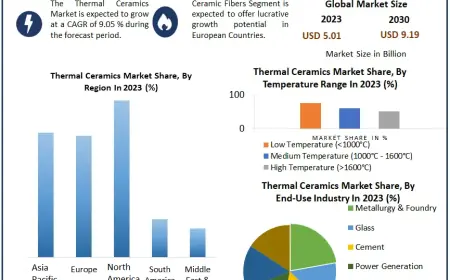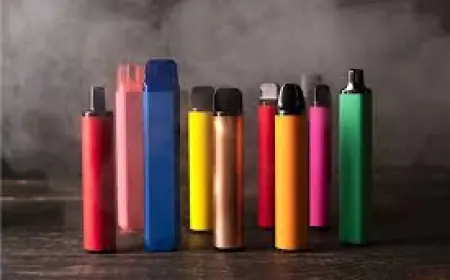Acrylic Resin Market 2024-2032: Industry Growth, Size, Share, Trends and Research Report
Acrylic resin is a type of thermoplastic or thermosetting plastic derived from acrylic acid, methacrylic acid, or their esters.

Summary:
- The global acrylic resin market size reached USD 21.4 Billion in 2023.
- The market is expected to reach USD 31.4 Billion by 2032, exhibiting a growth rate (CAGR) of 4.2% during 2024-2032.
- Asia Pacific leads the market, accounting for the largest acrylic resin market share.
- Water-based accounts for the majority of the market share in the type segment due to the rising demand for eco-friendly solutions.
- Paints and coatings represent the leading application segment.
- Building and construction hold the largest share in the acrylic resin industry.
- The rising demand from the construction sector is a primary driver of the acrylic resin market.
- The expanding automotive sector along with the growing popularity of acrylic resin in the healthcare and medical industry is reshaping the acrylic resin market.
Industry Trends and Drivers:
- Increasing Demand from the Construction Industry:
Acrylic resins are widely used in the construction sector due to their durability, weather resistance, and versatility in various applications such as paints, coatings, and adhesives. With the increasing global urbanization, particularly in emerging economies, there is a rising need for high-performance building materials that offer aesthetic and protective properties. Consequently, acrylic-based paints and coatings are favored in construction projects as they provide excellent UV resistance, enhancing the lifespan of buildings and infrastructure. The expansion of the construction sector, particularly in regions such as Asia-Pacific and the Middle East, is contributing substantially to the demand for acrylic resin as contractors seek materials that improve energy efficiency and reduce maintenance costs.
- Rise of Eco-Friendly and Sustainable Products:
Sustainability trends and environmental regulations are vital in shaping the growth of the acrylic resin market. As industries face rising pressure to minimize their ecological footprint, manufacturers are increasingly focusing on developing eco-friendly formulations. As acrylic resins can be formulated to reduce volatile organic compound (VOC) emissions, they are suitable for eco-conscious consumers and industries that must comply with stringent environmental standards. In paints and coatings, water-based acrylic resins are replacing traditional solvent-based products due to their lower environmental impact. Additionally, the recyclability of acrylic-based materials is contributing significantly to market growth as it aligns with broader global sustainability goals, encouraging industries to adopt acrylic-based solutions that reduce and reuse waste and contribute to resource efficiency.
- Growth in the Automotive and Packaging Industries:
The automotive and packaging industries significantly contribute to the rising demand for acrylic resins. In the automotive sector, acrylic resins are used in coatings that protect vehicles from harsh environmental conditions while enhancing their appearance. Since acrylic-based coatings possess superior scratch resistance, weather durability, and aesthetic appeal, they are an ideal choice for manufacturers and consumers. Moreover, the packaging industry benefits from acrylic resins in applications such as adhesives, inks, and films, where the clarity and adhesion properties of the material are essential. The rising demand for high-performance packaging solutions and the increasing emphasis on lightweight materials in the automotive sector are propelling the growth of the acrylic resin market.
Request Sample For PDF Report: https://www.imarcgroup.com/acrylic-resin-market/requestsample
Acrylic Resin Market Report Segmentation:
Breakup By Type:
- Water-based
- Solvent-based
- Others
Water-based accounts for the majority of shares due to its lower environmental impact, offering reduced volatile organic compound (VOC) emissions and enhanced sustainability.
Breakup By Application:
- Paints and Coatings
- Adhesives and Sealants
- Others
Paints and coatings exhibit a clear dominance as acrylic resins provide excellent durability, UV resistance, and color retention, making them ideal for protecting and enhancing surfaces.

Breakup By End User:
- Automotive
- Building and Construction
- Electronics
- Packaging
- Others
Building and construction dominate the market as acrylic resins offer weather resistance, superior durability, and versatility for coatings, adhesives, and sealants, which are essential in these sectors.
Market Breakup by Region:
- North America (United States, Canada)
- Asia Pacific (China, Japan, India, South Korea, Australia, Indonesia, Others)
- Europe (Germany, France, United Kingdom, Italy, Spain, Russia, Others)
- Latin America (Brazil, Mexico, Others)
- Middle East and Africa
Top Acrylic Resin Market Leaders:
- Arkema S.A
- BASF SE
- DIC Corporation
- Dow Inc.
- Koninklijke DSM N.V.
- Mitsubishi Chemical Corporation
- Mitsui Chemicals Inc
- NIPPON SHOKUBAI CO. LTD.
- Showa Denko Materials Co. Ltd.
- Solvay S.A.
- Sumitomo Chemical Co. Ltd.

Note: If you need specific information that is not currently within the scope of the report, we will provide it to you as a part of the customization.
About Us:
IMARC Group is a global management consulting firm that helps the world’s most ambitious changemakers to create a lasting impact. The company provide a comprehensive suite of market entry and expansion services. IMARC offerings include thorough market assessment, feasibility studies, company incorporation assistance, factory setup support, regulatory approvals and licensing navigation, branding, marketing and sales strategies, competitive landscape and benchmarking analyses, pricing and cost research, and procurement research.
What's Your Reaction?
 Like
0
Like
0
 Dislike
0
Dislike
0
 Love
0
Love
0
 Funny
0
Funny
0
 Angry
0
Angry
0
 Sad
0
Sad
0
 Wow
0
Wow
0















































